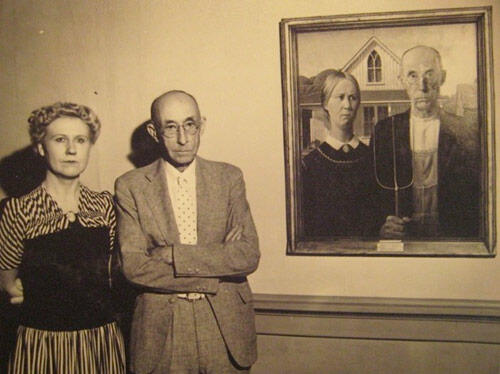
We’ve all seen American Gothic, or heard the title at the very least. It’s the subject of satire and costume attire everywhere and remains a mainstay of any art historical survey textbook. During my visit to Grant Wood: American Gothic and Other Fables at the Whitney Museum of American Art, I stood in front of this painting for about ten minutes, counting one-by-one as five couples took turns standing in front of the image poised to enter the iconic pose. Some even brought forks—actual kitchen forks—with them in preparation for the much-anticipated moment that they could hold them tall, proud, and expressionless, just as it is in the painting.

I poke-fun at these visitors partly to hide my jealousy at the fact that I was lacking a partner-in-farming with which I could pose in front of the masterpiece—for the ‘gram, of course—but also because this “pose and walk away” mentality discounts a lot of what makes this artwork so incredible. I’m here to shed some light on Wood’s underrated career, and while writing this piece from his native city, feel dually qualified to do so.

Making its first appearance in New York since 1999, American Gothic is a seemingly mundane scene that has transfixed the world’s imagination with its portrayal of 1930s rural America: two farmers, caught unaware in the middle of their daily routine. It’s perhaps the most recognizable and least understood image of all-time. People tend to think that the man and woman depicted are man and wife, but Grant insists that they are father and daughter, and while it seems to praise depression-era rural life, he may actually be ridiculing it. It's believed that Grant was a closeted homosexual for most of his life, and although he saw fame during his lifetime, he typically preferred to stay in the shadows, remaining largely invisible even to his closest friends and relatives. It’s safe to say that he was somewhat unhappy with the life, landscape, and individuals that he represented in his work.
This exhibition took me completely by surprise, seeing that I was also one of those who took Wood’s work at face value. What I saw when I entered the space left me dumbfounded; I couldn’t understand how someone could create work that appeared two-dimensional but evoked so much depth. It begins by outlining some of Grant’s early work, which includes immature landscapes and, surprisingly, lots of decorative art.










